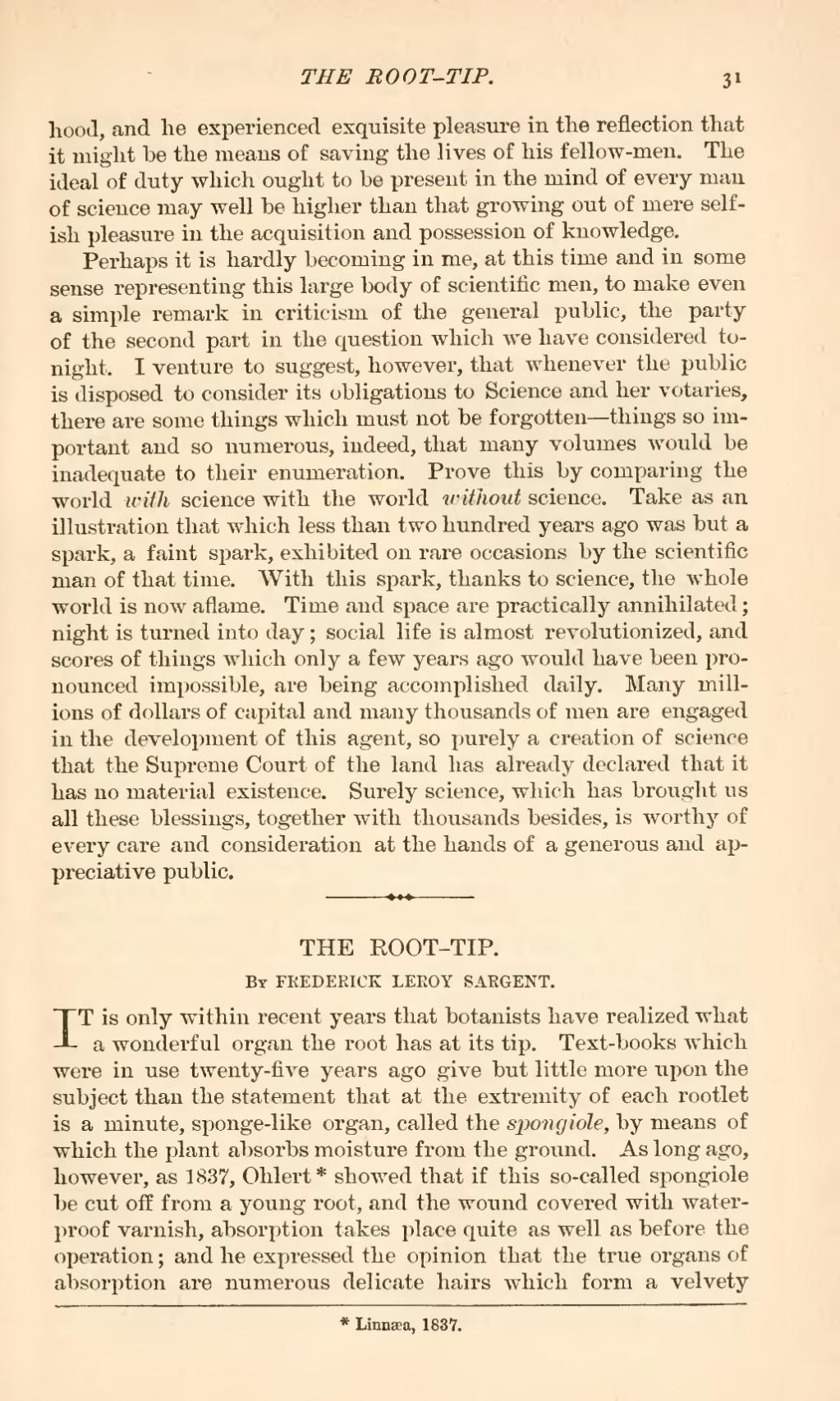hood, and he experienced exquisite pleasure in the reflection that it might be the means of saving the lives of his fellow-men. The ideal of duty which ought to be present in the mind of every man of science may well be higher than that growing out of mere selfish pleasure in the acquisition and possession of knowledge.
Perhaps it is hardly becoming in me, at this time and in some sense representing this large body of scientific men, to make even a simple remark in criticism of the general public, the party of the second part in the question which we have considered to-night. I venture to suggest, however, that whenever the public is disposed to consider its obligations to Science and her votaries, there are some things which must not be forgotten—things so important and so numerous, indeed, that many volumes would be inadequate to their enumeration. Prove this by comparing the world with science with the world without science. Take as an illustration that which less than two hundred years ago was but a spark, a faint spark, exhibited on rare occasions by the scientific man of that time. With this spark, thanks to science, the whole world is now aflame. Time and space are practically annihilated; night is turned into day; social life is almost revolutionized, and scores of things which only a few years ago would have been pronounced impossible, are being accomplished daily. Many millions of dollars of capital and many thousands of men are engaged in the development of this agent, so purely a creation of science that the Supreme Court of the land has already declared that it has no material existence. Surely science, which has brought us all these blessings, together with thousands besides, is worthy of every care and consideration at the hands of a generous and appreciative public.
| THE ROOT-TIP. |
By FREDERICK LEROY SARGENT.
IT is only within recent years that botanists have realized what a wonderful organ the root has at its tip. Text-books which were in use twenty-five years ago give but little more upon the subject than the statement that at the extremity of each rootlet is a minute, sponge-like organ, called the spongiole, by means of which the plant absorbs moisture from the ground. As long ago, however, as 1837, Ohlert[1] showed that if this so-called spongiole be cut off from a young root, and the wound covered with water-proof varnish, absorption takes place quite as well as before the operation; and he expressed the opinion that the true organs of absorption are numerous delicate hairs which form a velvety
- ↑ Linnæa, 1837.

